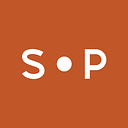Sam Goes Sign Painting
Let’s be real: I didn’t want this workshop to end. It was only four days, but I could’ve kept going every day to Mike Meyer’s Hand Lettering and Lettering Effects Workshopand been totally fine with it.
Mike is a legend in the world of lettering and sign painting. Based in Minnesota, he’s currently on a worldwide tour with his son, Caleb, and friend, Pascale. He’s teaching his workshops for the lettering agency Better Letters. When they announced a stop in Brooklyn, I signed up immediately.
The class assembled each morning at Sky High Murals — Colossal Media, which was an awesome way to start the day. The entire building — exterior and interior — is completely covered in murals. The workshop itself covered the techniques used in traditional sign painting and lettering.
Each day we tackled a different style; the first day was all about Gothic type, then casual and script lettering, 3D effects and shadows, and lastly, beveling.
Mike would start the morning showing us how to sketch our design on paper and the techniques to go over it with paint afterwards. He, of course, made it look easy. But in practice, you really need to focus on how you’re using the brush, applying pressure at the right times, and turning it at just the right angles.
We all know, obviously, how to write, but with this I felt like I really needed someone to show me how to draw each letter. After the demonstration we’d grab a sheet of paper and retreat to our shared easel spaces to start sketching.
I was among a really eclectic group of students; some painted movie sets and worked in film, while others did lettering full-time. And then there were, of course, designers like me who were interested in learning more about the style of lettering.
It’s kind of crazy: as a designer, it would take 10 minutes to mock this up on a computer. But when you’re painting, this type of lettering takes hours, sometimes days, of work. I loved being able to think of typography as more of a visual element rather than just typing all the information on a page.
If you’re taking the time to paint a poster or a sign, the words have a lot more meaning and personality than a printed version. The lettering style is also becoming really popular, but there’s a bit of an edge to it that calligraphy lacks, which I find really appealing. Each sign painter learns the same techniques, but adds a bit of their own flair to each letter.
Admittedly, after the first day, I was a bit worried about what I had gotten myself into. I practice calligraphy and very basic lettering in my free time, so I went in thinking “I’ve totally got this — it’s the same thing, but a little larger scale.” Then I realized it reallytakes a long time to master, and a lot of patience and practice. To give you some perspective, Mike has been doing it since he was in high school.
I asked my brother to help me build an easel so I can keep lettering at home. God knows where, my apartment’s very small and my roommate’s probably going to kill me. But it’s one of those skills you learn and just want to keep doing forever.
Plus, I’m always looking for an excuse to not be staring at a screen. I feel a different type of connection to something that I’ve made physically versus something I’ve made digitally.
The things that I’ve made digitally, more often than not, have been for work. That work is gratifying and necessary, but the things I make by hand are for myself (unless it’s a gift for my mom). I make them for my own personal enjoyment, and I can see myself progressing and learning, which is just as vital and important.
This style of lettering, too, is growing more and more popular. The inspiration is everywhere — chalkboards for restaurants, signs for concerts, vintage car decals, murals … there’s a whole world of things out there if you know where to look.
Sam is a designer at Small Planet. An expert napper and award-winning pie baker, she can often be found practicing her lettering or staying up past her bedtime tinkering on various projects.
